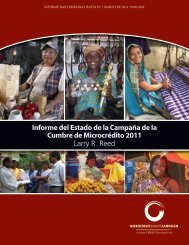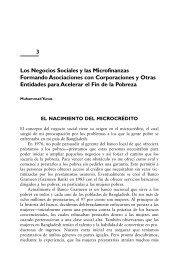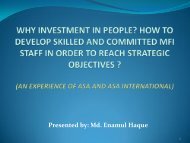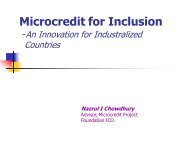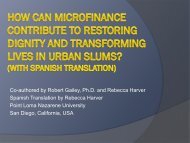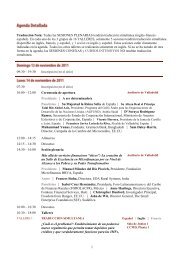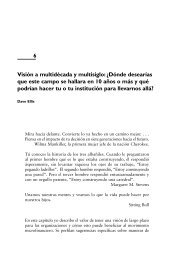Financial Literacy: A Step for Clients towards Financial Inclusion
Financial Literacy: A Step for Clients towards Financial Inclusion
Financial Literacy: A Step for Clients towards Financial Inclusion
You also want an ePaper? Increase the reach of your titles
YUMPU automatically turns print PDFs into web optimized ePapers that Google loves.
Quality education also requires attention to the mundane – logistics, location, schedule.<br />
Getting these details wrong can easily sink a program. All aspects of an education<br />
program must reflect the participants’ priorities.<br />
Learning by doing<br />
Free to Grow offers financial education to low-income employees of large companies in South<br />
Africa. It uses metaphor, imagery, anecdotes and case examples to make abstract concepts easier to<br />
understand. Its MoneySense program provides learners with the opportunity to practise real-world<br />
applications through experiential learning. Participants’ are split into groups or “households” and<br />
given “Free to Grow” money and picture cards of monthly expenses (e.g. transport, food, clothing,<br />
entertainment etc.), and instructed to allocate money to each expense. Having done this, groups<br />
often find that their money is over-allocated to certain expenses, leaving nothing <strong>for</strong> school fees,<br />
after-school care and the like. Following this exercise, individuals are given budget sheets on<br />
which to plan their actual monthly expenditures. (Microfinance Opportunities and Genesis<br />
Analytics, <strong>for</strong>thcoming.)<br />
Simulations are worth a thousand words<br />
The MFO curriculum “Risk Management and Insurance” includes a simulation activity based on a<br />
group of people who share or ‘pool’ their resources to create a hypothetical funeral fund.<br />
Participants handle small objects that represent money (e.g. stones, bottle caps, buttons, etc.); they<br />
simulate paying into fund monthly and withdrawing from it as needed. They see what happens to<br />
their benefits when there are many funerals in members’ families, and discuss questions such as<br />
“How is the group able to give more to a member than she paid in? What do you think happens to<br />
your money if you do not have a death in your family during the year?” (Microfinance<br />
Opportunities, 2008)<br />
Delivery Channels<br />
The elements of effective financial education --relevance, quality and use -- have been<br />
presented largely in relationship to classroom, or in-person training. While valuable at<br />
conveying new knowledge, skills and attitudes to small groups of people, this<br />
dissemination channel confronts budgetary hurdles when the goal is to go to scale with<br />
financial education. There is growing evidence to suggest that a mix of dissemination<br />
methods -- print, mass media and technology -- is advantageous. In Mexico, a video on<br />
managing remittance income and debt now plays in US consulates and the bank lobbies<br />
19




